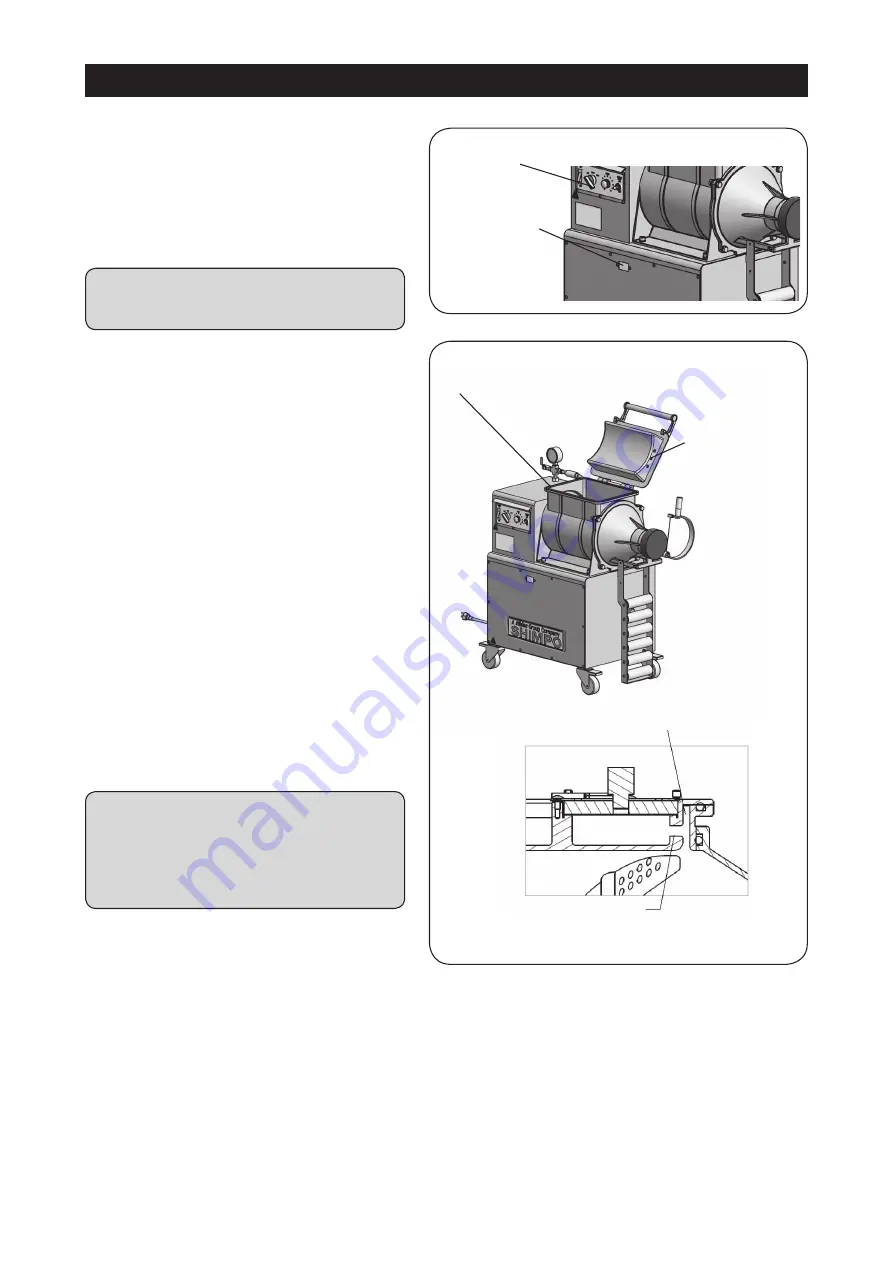
11
7. Vacuuming (de-airing) process
•
When the clay reaches the appropriate consistency,
remove any clay that might be clogging the air inlet. If
clay covers the air inlets, the readings on the vacuum
gauge will increase, but the inside of the may not be
de-aired.
6. Checking the mixed state
•
Carry out mixing for a while and when the electric
current value of the motor becomes stable, check the
state of clay. If the clay is too hard, added water; if it
is too soft, add hard clay.
•
Make sure the nozzle cover is clean, then place it over
the nozzle.
• Close the vacuum’s pressure relief valve, then turn ON
the vacuum pump. The reading on the vacuum gauge
will gradually increase. The gauge should reach a
minimum of 0.09 Mpa.
•
Set the selector switch to MIX. Slowly set the speed
control to 6 to 8.
If the vacuum pressure suddenly increases,
the gap between the door, near the air inlet,
and the case might be clogged with clay.
Remove the clay in that gap. If this does not fix
the issue, there might be too much clay being
mixed. Decrease the amount of clay.
•
Mix clay with water and then continue the operation
of the vacuum pump and the screw for about three
minutes.
Clay becomes harder as it is de-aired.
Therefore, the mixed clay should be softer than
what is desired for use.
Clean both surfaces of the hopper cover and the case
(including the gasket).
Remove clay
between the
hopper cover and
the case and from
the air inlet.
Gap between hopper cover and case
Air inlet
If the gap between the hopper cover, near the air inlet, and
the case are clogged with clay, do de-airing will occur.
Note)
Set the selector
switch to STOP
Note)
Comfirm the
electric current
value showed in
the indicator
English
Operation procedure
Содержание NVS-07
Страница 2: ......
Страница 45: ...44 MEMO...
Страница 46: ...45 MEMO...
Страница 47: ...46...
Страница 48: ...1 Terada Kotari Nagaokakyo city Kyoto 617 0833 Japan Phone 81 75 958 3608 FAX 81 75 958 3647...













































